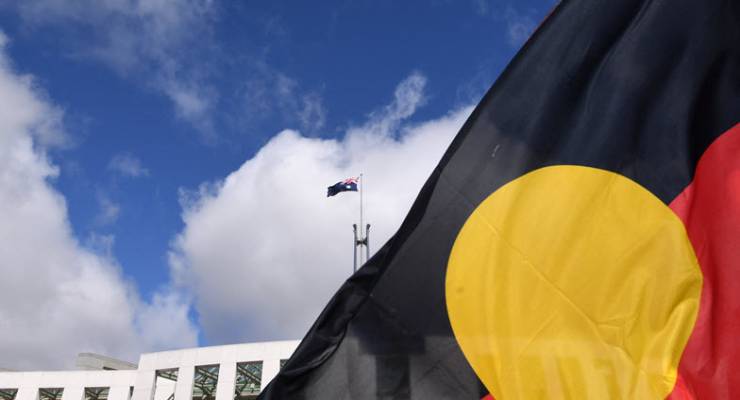
While Tuesday night’s budget gave treasurer Josh Frydenberg an opportunity to flex the government’s commitment to mental health, Indigenous programs missed out.
Youth suicide was labelled a “national priority”, $461 million was earmarked for young people’s mental health, and the government also promised to open 30 new Headspace centres and extend funding for psychosis treatment. Meanwhile just $5 million will be devoted to Indigenous suicide prevention programs, despite Aboriginal communities being in the midst of what medical bodies and advocates refer to as a “crisis”.
It’s a figure that has disappointed people working in Indigenous health, who feel the commitment is simply inadequate.
The crisis
Since the start of this year, there have been 35 suicides of Indigenous people. Three of the dead were children under the age of 12. Earlier this year, Western Australian state coroner Ros Fogliani released a report into the deaths of 13 Indigenous young people in the Kimberley which found that 12 had died by suicide, while an open finding was made in the other case. The youngest to die was just 10 years old.
The report barely made an impact in WA parliament the following week. Meanwhile medical bodies called on the government to develop a crisis response to the situation.
The government’s response
Josh Frydenberg labelled mental health “an issue of deep concern to all Australians”, and promised to work to combat youth suicide. The government’s specific plan around Indigenous suicide prevention is to earmark $5 million for mentoring and peer-support programs for Indigenous youth. These programs will be led by local youth Indigenous leaders and focused on at-risk remote and regional areas, although the government is currently unable to specify who these leaders will be.
This peer support program appears similar to offerings that have already been made in this space. In response to the WA report earlier this year, the government promised a series of community-driven action plans across the Kimberley. Still, some Aboriginal health professionals felt the response in the budget was inadequate, particularly compared with what was allocated to mental health more broadly.
Melanie Robinson, CEO of the Congress of Aboriginal and Torres Strait Islander Nurses and Midwives, told Crikey she was “disappointed” to see how little Indigenous suicide got, given the sizeable investment in Headspace. “A lot of our leaders have been saying we need to do more. It’s a good attempt, but it’s way short of what’s needed.”
Robinson said similar concerns had been raised by many others working in the Indigenous healthcare space.
What needs to be done
Robinson believes developing culturally sensitive suicide prevention programs, led by and tailored to Aboriginal people is crucial to responding to Indigenous mental health issues. She says that funding constraints have often led to programs developed overseas or by non-Indigenous people being imposed on communities. She pointed to WA, where statewide mental health programs had achieved better outcomes when Indigenous health workers were involved.
“We need specialist programs because our needs are so different. It’s not about just mental health, it’s about emotional, social, cultural health,” Robinson said.
The Indigenous youth suicide crisis is rooted in the complex tangle of intergenerational trauma, colonisation and racism. In her report, WA coroner Fogliani also pointed to the “crushing effects of intergenerational trauma”. Robinson said the constant presence of trauma in Aboriginal communities played a big part in the crisis.
“[Children] see trauma all the time — always going to funerals and always losing people. You carry that weight with you”.
She also argued that the ongoing stigmatisation of Indigenous Australians made children feel worthless. “Some of these high-profile people peddling racist beliefs and questioning Aboriginal identity has an impact,” Robinson said.
With all these complexities adding further risk factors, advocates wonder if $5 million will be enough to make a change.
For anyone seeking help, Lifeline is on 13 11 14, and Beyond Blue is 1300 22 4636. Headspace and ReachOut have useful mental health resources for young people.








The ongoing stigmatisation of Indigenous people contributing in part to the suicides is real and, considering the actions of our ancestors, a national disgrace.
No.
But is the government doing enough to tackle any suicide? We lose more of our veterans to suicide than we do in the theatre of war. Suicide is the leading cause of death for those aged under 40.
No. The current minister responsible seems to think it is a better idea to give Aboriginal funding to his white mates in the cattle industry and in the fishing industry. When the Intervention was announced, this man happily announced on ABC radio that he raised his family on remote Aboriginal communities . A lie. His family lived in Darwin and his children attended Darwin’s most expensive private almost all white primary and middle school. Scullion was a fisherman and he was not based in any Aboriginal communities. Slippery as an eel, this bloke. Like all the NLP pollies, always an eye open for his ‘needy’ mates…….
I’m really glad that Crikey is continuing to report on the issue of Indigenous and Indigenous youth suicide. My heart breaks that the West Australian government has responded to the Fogliani findings and recommendations in the way it has (or hasn’t!!). I want to pull my hair out in frustration that they would put the money and resources into commissioning the Inquest and then just sit on the results – AGAIN.
What I don’t understand is why Crikey journalists are being so coy about the bulk of Fogliani’s recommendations. Yes, mention is made of the historic and cultural context, that is, the inter-generational trauma, but her recommendations are concrete, straight-forward – not cheap and easy, but I think they should at least be debated. They include FASD prevention, diagnosis, and treatment, restrictions on alcohol sales, the provision of trauma informed mental health care, a cashless debit card – among 42 recommendations in total (For those interested, the findings and recommendations of the Inquest can be downloaded here:
https://www.coronerscourt.wa.gov.au/I/inquest_into_the_13_deaths_of_children_and_young_persons_in_the_kimberley_region.aspx ).
Is it that Crikey doesn’t want to give even a moment’s airtime to recommendations such as the cashless debit card? Are you pushing so hard in the direction of colonising powers being held responsible for present-day suicides because any reference to the possibility of causal factors including drinking during pregnancy and child sexual abuse will cause non-indigenous Australia to wash our hands of the situation completely?
I suppose my question to Kishor Napier-Raman and Natalie Cromb is, do you want the McGowan government to take Fogliani’s recommendations seriously, or are you glad they ignored the Inquest findings?